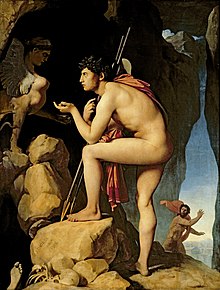Lecture:
In this lecture, we learn how the Arts and Craft Movement transitioned into the Arts Nouveau Movement and about massive progress in the industrial world. As industrial mass-production increased, working conditions declined. In protest of this, trade unions were being made throughout the late nineteenth and early twentieth century. It was particularly harsh on women who did not have much say in political affairs of the time although New Zealand was the first to let them vote in 1893. Emmeline Pankhurst stood out among the rest as having moxie and founding Women’s social/political union. She was arrested approximately 8 times for standing up for their rights at a time.

In terms of art and architecture, Alfons Mucha stood out for his contribution to the movement and is the most well known artist coming out of this time.I am also a huge fan of his work C: He made many job posters and was known for the “whiplash curves” he drew in the hair of women.
Another noteworthy artist or group of artists were Charles Rennie Mackintosh and the Glasgow Four consisting of him, J. Herbert McNair and Francis+Margaret McDonald. Their work was very reminiscent of the Art Nouveau Style but had a geometric twist. Aside from art, they did architectural work and designed school-boards in Glasgow.
Research:

Sigmund Freud is known today as one of the most influential and controversial thinkers of the twentieth century. While his theories have been the source of great controversy/debate and many have been debunked over time, it is undeniable that he’s had a huge impact on psychology, therapy and culture. In everyday life, we often hear the words “Freudian Slip”, “repression”, and “denial” pop up in everyday language which all stemmed from own ideas. These ideas were all part of his goal to pursue what mysteries lie beyond the awareness of our conscious mind.

In 1899, the founder of psychoanalysis Sigmund Freud released a book called “The Interpretation of Dreams”. It is perhaps one of his most famous and also his personal favorite. It introduces his theory of what occurs in our unconscious mind, interprets the meaning of dreams and also discusses the Oedipus Complex. The book was long, complex and needed atleast 8 revisions. He later made the short and sweet version called “On Dreams”. His analysis of dreams concluded that they were important functions for and the “royal road” to unraveling the subconscious. In dreams, our ego is lowered so material we repress without realizing or even things in denial come to the surface even though it may come in a distorted way. They are also representative of wish fulfillment and loaded with symbolism. Freud also maintains that certain objects appearing in our dreams can mean different things for different people depending on their circumstances. Even though he may think guns poles and swords represent the penis, it may just mean potential danger and fear for another. ¯\_(ツ)_/¯

The famous Oedipus complex outlines two branches which are the positive and negative outcomes. The former outlines a child’s unconscious desire for opposite sex parent and hatred for the same-sex parent. The later is the same except reversed and is said by Freud to lead to possible neurosis, pedophilia and homosexuality.

Sources:
Judy’s Notes !
https://www.verywellmind.com/sigmund-freud-his-life-work-and-theories-2795860
https://www.simplypsychology.org/Sigmund-Freud.html
Halberstadt, Max (c. 1921). “Sigmund Freud, half-length portrait, facing left, holding cigar in right hand”. Library of Congress. Archived from the original on 28 December 2017. Retrieved 8 June2017.
https://www.baumanrarebooks.com/rare-books/freud-sigmund/interpretation-of-dreams/83879.aspx